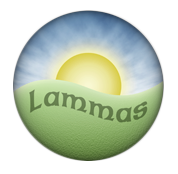Hoppi Wimbush
Research Article on One Planet Development
Mark Waghorn, low-impact architect, has just had an article published in an online architectural journal. It's free to view and download. You can find it here:
http://www.enhsa.net/archidoct/
Willow and Flax Craft at Lammas
Willow has been used to weave baskets for thousands of years. In fact there is evidence of weaving from stone carvings that date back 20 000yrs. The materials used would have depended on people’s surroundings. Here is West Wales I, Melissa, have been growing willow for basket weaving on our plot for the past five years. Each year I coppice the willow in winter. In fact I have recently completed my harvest for this year. I have thirteen varieties of basket willow which range in colour from yellow through to black. The willow is dried out and then needs soaking, a day a foot plus a day, to be flexible enough to weave with. Having such a wet climate is perfect for growing willow. I have been teaching basket making since 2009 and teach a weekly class at a local college.
New Zealand flax (phormium tenax) is known as Harakeke in Māori. The plant bears no relation to the true Flax but is named after it due to the likeness in strength and colour of its fibres. It is the main fibre plant of the Māori and was used for everything from clothing to matting, cordage and basketry. Jacqui has planted several plants around the Lammas site and harvests it to weave ornamental flowers, flower broaches, hats and baskets. It grows very well here, coping well with windy and wet conditions - you have probably seen it planted around towns as it is a favourite of municipal planting because it is so easy to look after.
Jacqui and Melissa will be running a willow and flax basket making weekend at the Lammas hub on the 7th and 8th May. We will be making a stake and strand basket and flax flowers which can be incorporated into the basket. For more information see the courses listed below.









